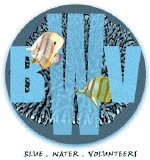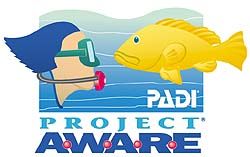Dive Expedition to the Southern Islands
27th August 2006, Sunday
7.30 am
Tiring day! Just got home from work a couple of hours earlier and had to leave home for a full day of diving. Lingjun drove and fetched me. We headed for Harborfront.
7.55 am
We reached the Hawker centre opposite Harbourfront and packed some Lunch.
8.10 am
We were already late and headed straight for Keppel Marina @ Bt Chermin Road.
8.20 am
We arrived at Keppel Marina and saw Chay Hoon alone at the Dotty Cafe. I asked her where the rest were and she informed me that she's diving with the Hantu Blog @ 9 am. They probably left without us as I reckoned we were 20 mins late. Lingjun and I walked out to the jetty and saw the Southern Comfort leaving......
8.30 am
We were actually quite ready to go home when some of the guys onboard Southern Comfort called out to us.... It seemed like they're still expecting us and indeed, the small little Dolphin Explorer 2 was waiting out for us around the corner obscured from view.
8.40 am
Lingjun was having her...um first day(u noe... women's monthly problem) and she anxiously checked out if there's toilet facilities onboard.... To her disappointment and horror?? It was a small little semi exposed cubicle where your little privacy could be intruded if someone just happened to turn and look... Our request to go onboard Southern Comfort instead was rejected.
That really worried Lingjun alot as she didn't know what to do.... she headed for the toilet at Dotty cafe one last time just to check on her stuffs... meanwhile i helped complete all the necessary paperwork.
Pulau Jong... The Island of Junks
8.55 am
We head out for our first divesite of the day: Pulau Jong.
The weather was fair and sea conditions were calm. I never dive P. Jong (Junk Island) before prior to this trip so I did not know what to anticipate.... The boat operator, Francis gave a dive briefing before we hit the waters and I was entralled when he said Jong has a good diversity of critters like nudibranchs....
9.30 am
 Entered the waters at the sheltered western side of Pulau Jong. The eastern side of the island is a shipping fairway. The visibility was sweet! It was like 3-5 metres. There was little or no currents. Reef life was very good. There's a diversity of healthy coral growth... From sea anemones, acorporals, gorgornian fans to large brain corals... The silt suspension in the water was visibily lower than that at P. Hantu in comparison. There's alot of Yellow-tail Fusiliers, Copperband butterflyfishes, Damsels and Anemone Clownfishes... Strange thing was that all the nudibranchs had gone into hiding.... I only managed to come across 2 phyillids and a facelina.
Entered the waters at the sheltered western side of Pulau Jong. The eastern side of the island is a shipping fairway. The visibility was sweet! It was like 3-5 metres. There was little or no currents. Reef life was very good. There's a diversity of healthy coral growth... From sea anemones, acorporals, gorgornian fans to large brain corals... The silt suspension in the water was visibily lower than that at P. Hantu in comparison. There's alot of Yellow-tail Fusiliers, Copperband butterflyfishes, Damsels and Anemone Clownfishes... Strange thing was that all the nudibranchs had gone into hiding.... I only managed to come across 2 phyillids and a facelina.

A pair of Phyllidiella pustulosa

A juvenile Pteraeolidia ianthina

Undescribed Polyclad Flatworm (Pseudobiceros sp.)

Lingjun in the relatively calm waters around Pulau Jong
Pulau Biola and the Raffles Lighthouse...
10.55 am
We left Pulau Jong for our next destination, Pulau Biola. Pulau Biola is a small island outcrop just next to Pulau Satumu, the island that Raffles Lighthouse was built on. It is a restricted area and it requires permit to come within 300m radius of the island. Needless to say Dolphin Explorer ain't got any permit to bring us there so we were a bunch of illegals onboard sneaking within the island legal boundaries. The reef around the Lighthouse is among the healthiest in our waters and holds the richest diversity of marine life you can find in Singapore. You can also expect the best visiblity here at an average of 5-10 metres. Sharks, morays and even dolphins are sighted here which are rare anywhere else in Singapore. Due to the straits and the open sea, this unsheltered site is exposed to the elements of weather and is swept by the wildest currents.
11.20 am
There was a 3rd Gen Police Coast Guard(PCG) boat about 100m off Raffles Lighthouse and another one patrolling vigilantly around the vincinity. It was impossible for us to get into the waters. What bad luck.... I believed they were watching us closely and would swoop in on us immediately if we were to jump into the waters... Francis cruised the pleasure craft around Raffles Lighthouse for a while and then decided to head for Pulau Salu instead for our next dive......

Pulau Biola (The Island of Violins)

Raffles Lighthouse on Pulau Satumu (The Island with One Mangrove Tree)
Pulau Salu...An emerald island setting in the watercourse channels
11.55 am
We reached Pulau Salu's western reef. The upcoming 2 dives would be done here. There was bad air visibility at noon and the haze enveloped Pulau Salu's facade of tropical green that I fancied the last time I was here. The White-bellied sea eagles were still encircling the little island jewel.
12.00 pm
Lingjun and I were trying to swim inland for a good 10mins before descending but we decided against it because we sensed surface swells pushing us southwards. We descended into a bed of seagrass and continued north. The underwater scene was pretty much the same when I last visited Salu. The distinct greenish hued waters and the thick foliage of greens made nagivation a challenge. There wasn't much to see here except for a few crabs and whelks. My special find of this dive was a pair of Whip coral partner shrimps. Very tiny! My first sighting of such species.

A defensive Blue Swimming Crab (Thalamita sp.)
This is a male, distinguished by its fiery red pincers while the female possess blue claws

Whip Coral Partner Shrimp (Pontonides unciger)
A commensal of black coral colonies belonging to the genus Cirripathes

Pontonides unciger are usually found in pairs, living exclusively on its antipatharian host (commonly known as "black coral" whip), of which it perfectly mimics the polyps of the sea whip

1.00 pm
We surfaced after spending 50 mins of bottom time. We were beside Southern Comfort, taking our sweet time to make fun and take pictures... totally unaware of the currents sweeping us from below. Before we realised, we were swept more than 100 m inland towards the fairways between Pulau Salu and Pulau Sudong. We turned and saw all other divers on the surface struggling against the surface swells while Lingjun and I were comfortably riding on the swift flow. It was a long and tiring swim back to Dolphin Explorer. Although She is only about 50 m away, we spent 20 mins doing extreme workout against the treacherous flow. We eventually got back onboard while some others gave up and freeflowed into the main stream. I saw a couple hanging onto the trunk of a partially submerged tree(as you can see in the background of the pic above) for their dear lives. A rescue boat was called in to retrieve them out of the situation.
2.00 pm
Dolphin Explorer finally managed to get everyone onboard. It had been only 2 dives and everyone was worn and torn.... We had lunch to replenish the lost energies and after a bit of rest, we were up and ready for the next dive!
2.35 pm
We entered Salu's waters and descended further out this time so that we will not hit the seagrass forests. The visiblity was not as good as the last dive and it got darker as we descended deeper. We went northeast towards the shallows after we hit the bottom at 12 m. There were alot of healthy gorgonian fans near the northern tip of Salu. Coral life looked good and the place was littered with sea urchins. This dive was a bit disappointing as we practically saw nothing interesting except a tiny brittle star wrapped tightly around a sea whip.

A Star find: An Unidentified Brittle Star belonging to the Class, Ophiuroidea
The brittle star (also called the serpent star) is a spiny, hard-skinned, long-armed animal that usually lives on the rocky sea floor, from shallow waters to great depths. These marine invertebrates can move very quickly by maneuvering their long arms. There are over 2,000 different species of brittle stars worldwide. They are nocturnal creatures and are seldom encounterd in daylight although they are abundant everywhere in Singapore waters. They usually hide under rocks, in crevices, in sand/mud or among coral colonies.
Anatomy: Most brittle stars have five (or a multiple of five) long, thin, spiny arms that radiate from a flat central disk; the arms do not touch each other at their bases. Many of the arms are forked. If a brittle star's arm is cut off, it will regenerate (regrow). Brittle stars that have multiple-forked arms are called basket stars. Most brittle stars are under 1 inch (2.5 cm) in diameter. They have a hard exoskeleton and vary in color. They do not have a brain; they have a simple ring of nerve cells that moves information around the body. Tube feet located along the arms sense light and smells.
Diet: Brittle stars are mainly detrivores (detritus-eaters); they eat decaying matter and plankton. Some brittle stars can also kill small animals. They push their stomach out through their mouth (which is located on the underside of the disk of the brittle stars) and digest the prey (there is no anus). The mouth has five teeth.
I can't find any reference that point to this particular species of serpent stars. Maybe it's a new record in Singapore?? Its distinct gaudy yellow polkadots, circumcised by black rings on a white based texture blends it to the seawhip.
Judging from its short spined arms, i would deduce that this Echinoderm is of the Order: Ophiurida, Family: Ophiodermatidae. A little help on ID here would be appreciated.....
3.25 pm
We tried turning back when we discovered strong currents pushing us northwards too fast. We were overwhelmed by the surge of the incoming tidal currents and Lingjun floated to the surface like a superman. We both surfaced and found ourselves in very shallow waters with urchins and seagrass right below us. We got no choice but to fight the surface currents and waves to reach the nearest boat. Dolphin Explorer was no where to be found! We fought a tiring and life draining battle with the sea for a good 30 mins before we triumphed and reached the safety of Southern Comfort.
4.00 pm
 We were onboard Southern Comfort when Lingjun released her torchlight cache and empty the contents into the seawater.... there goes her $50 birthday present.....
We were onboard Southern Comfort when Lingjun released her torchlight cache and empty the contents into the seawater.... there goes her $50 birthday present.....
Dolphin Explorer went to pick other divers in distress and we waited a while before leaving Pulau Salu for our last dive destination of the day: The Sudong Wreck!

Distressed diver lost her lights....
Sudong Wreck - The colours of a Steel Barge...
4.45 pm
We reached the site but the black buoy marking the wreck was gone??... Francis dropped the anchor and bingo! It hit the wreck. We descended along the anchor line down to the wreck to find the anchor stuck. Serveral of us helped by pulling the anchor to free it but it was too heavy. Other divers continued tucking at the anchor while Lingjun and I swam off for adventure(opps sorry). The wreck still amaze me and continued to fascinate me with its coral growth and life proliferation. Huge Seafans and green Acorporal corals that houses numerous critters are all over the sides and bottom of the wreck. Sponges, stinging hydriods and tunicates decorate the wreck in colourful shades of blue, yellow, green, orange and red! Lots of Blue Dragons and Iconaster sea stars. We spent 1 hour of bottom time foraging for critters and trying our luckto look for the resident tigertail seahorse(to no avail) . I was surprised to see 2 huge Emperor Angelfish inside the wreck but they're too shy for pictures.

Bristle-tail Filefish also known as a LeatherJacket (Acreichthys tomentosus) shying away from my camera
Leather Jackets have tough, sandpaper textured skin, hence their name. They can change their body colour to their surrounding environment and rely on camouflage as their survial trait. They cannot swim fast due to their oddly shaped body and small fins but are capable of short burst of speed. They usually assume postions near seagrass, swaying in the current like a piece of leaf or vegetation. When threatened, they will try to hide in crevices. They can grow to large sizes but those encountered on the reefs like the one above are juveniles measuring only about 5 cm. They are benthic feeders meaning they eat small bottom-dwelling animals like small prawns. It also nibbles on seaweed, seagrass and immobile animals like bryozoans and ascidians. It has a pointed mouth adapted for nibbling and sucking small prey out of their hiding places. There is a single long stiff dorsal spine, usually with downward pointing barbs on the edges. This feature gives it its scientific name: 'mono' means 'one' and 'canthus' means 'thorn'. The dorsal spine can be locked upright to wedge in crevices, safe from predators and from being swept away by currents. Most have a second dorsal spine but this is usually small. Filefishes belong to Family Monacanthidae. The family has 31 genera and 95 species. They are found in the Atlantic, Indian and Pacific Oceans.

Sapphire margined Flatworm(Pseudoceros sapphirinus) wriggling across the seabed

An Allied Cowry extending its mantle wrapping around to feed on the seawhip

A Hermit Crab feeding

My superstar buddy
5.50 pm
We ended the dive because my superstar buddy has got very fat bouyant legs that were pulling her to the surface.... ha ha. We headed back and reached Keppel Marina at about 6.45pm. It was overall another day of good experience in Singapore waters doing extreme workout whilst breathing compressed air!

The fun buddy pair!
7.30 am
Tiring day! Just got home from work a couple of hours earlier and had to leave home for a full day of diving. Lingjun drove and fetched me. We headed for Harborfront.
7.55 am
We reached the Hawker centre opposite Harbourfront and packed some Lunch.
8.10 am
We were already late and headed straight for Keppel Marina @ Bt Chermin Road.
8.20 am
We arrived at Keppel Marina and saw Chay Hoon alone at the Dotty Cafe. I asked her where the rest were and she informed me that she's diving with the Hantu Blog @ 9 am. They probably left without us as I reckoned we were 20 mins late. Lingjun and I walked out to the jetty and saw the Southern Comfort leaving......
8.30 am
We were actually quite ready to go home when some of the guys onboard Southern Comfort called out to us.... It seemed like they're still expecting us and indeed, the small little Dolphin Explorer 2 was waiting out for us around the corner obscured from view.
8.40 am
Lingjun was having her...um first day(u noe... women's monthly problem) and she anxiously checked out if there's toilet facilities onboard.... To her disappointment and horror?? It was a small little semi exposed cubicle where your little privacy could be intruded if someone just happened to turn and look... Our request to go onboard Southern Comfort instead was rejected.
That really worried Lingjun alot as she didn't know what to do.... she headed for the toilet at Dotty cafe one last time just to check on her stuffs... meanwhile i helped complete all the necessary paperwork.
Pulau Jong... The Island of Junks
8.55 am
We head out for our first divesite of the day: Pulau Jong.
The weather was fair and sea conditions were calm. I never dive P. Jong (Junk Island) before prior to this trip so I did not know what to anticipate.... The boat operator, Francis gave a dive briefing before we hit the waters and I was entralled when he said Jong has a good diversity of critters like nudibranchs....
9.30 am
 Entered the waters at the sheltered western side of Pulau Jong. The eastern side of the island is a shipping fairway. The visibility was sweet! It was like 3-5 metres. There was little or no currents. Reef life was very good. There's a diversity of healthy coral growth... From sea anemones, acorporals, gorgornian fans to large brain corals... The silt suspension in the water was visibily lower than that at P. Hantu in comparison. There's alot of Yellow-tail Fusiliers, Copperband butterflyfishes, Damsels and Anemone Clownfishes... Strange thing was that all the nudibranchs had gone into hiding.... I only managed to come across 2 phyillids and a facelina.
Entered the waters at the sheltered western side of Pulau Jong. The eastern side of the island is a shipping fairway. The visibility was sweet! It was like 3-5 metres. There was little or no currents. Reef life was very good. There's a diversity of healthy coral growth... From sea anemones, acorporals, gorgornian fans to large brain corals... The silt suspension in the water was visibily lower than that at P. Hantu in comparison. There's alot of Yellow-tail Fusiliers, Copperband butterflyfishes, Damsels and Anemone Clownfishes... Strange thing was that all the nudibranchs had gone into hiding.... I only managed to come across 2 phyillids and a facelina.
A pair of Phyllidiella pustulosa

A juvenile Pteraeolidia ianthina

Undescribed Polyclad Flatworm (Pseudobiceros sp.)

Lingjun in the relatively calm waters around Pulau Jong
Pulau Biola and the Raffles Lighthouse...
10.55 am
We left Pulau Jong for our next destination, Pulau Biola. Pulau Biola is a small island outcrop just next to Pulau Satumu, the island that Raffles Lighthouse was built on. It is a restricted area and it requires permit to come within 300m radius of the island. Needless to say Dolphin Explorer ain't got any permit to bring us there so we were a bunch of illegals onboard sneaking within the island legal boundaries. The reef around the Lighthouse is among the healthiest in our waters and holds the richest diversity of marine life you can find in Singapore. You can also expect the best visiblity here at an average of 5-10 metres. Sharks, morays and even dolphins are sighted here which are rare anywhere else in Singapore. Due to the straits and the open sea, this unsheltered site is exposed to the elements of weather and is swept by the wildest currents.
11.20 am
There was a 3rd Gen Police Coast Guard(PCG) boat about 100m off Raffles Lighthouse and another one patrolling vigilantly around the vincinity. It was impossible for us to get into the waters. What bad luck.... I believed they were watching us closely and would swoop in on us immediately if we were to jump into the waters... Francis cruised the pleasure craft around Raffles Lighthouse for a while and then decided to head for Pulau Salu instead for our next dive......

Pulau Biola (The Island of Violins)

Raffles Lighthouse on Pulau Satumu (The Island with One Mangrove Tree)
Pulau Salu...An emerald island setting in the watercourse channels
11.55 am
We reached Pulau Salu's western reef. The upcoming 2 dives would be done here. There was bad air visibility at noon and the haze enveloped Pulau Salu's facade of tropical green that I fancied the last time I was here. The White-bellied sea eagles were still encircling the little island jewel.
12.00 pm
Lingjun and I were trying to swim inland for a good 10mins before descending but we decided against it because we sensed surface swells pushing us southwards. We descended into a bed of seagrass and continued north. The underwater scene was pretty much the same when I last visited Salu. The distinct greenish hued waters and the thick foliage of greens made nagivation a challenge. There wasn't much to see here except for a few crabs and whelks. My special find of this dive was a pair of Whip coral partner shrimps. Very tiny! My first sighting of such species.

A defensive Blue Swimming Crab (Thalamita sp.)
This is a male, distinguished by its fiery red pincers while the female possess blue claws

Whip Coral Partner Shrimp (Pontonides unciger)
A commensal of black coral colonies belonging to the genus Cirripathes

Pontonides unciger are usually found in pairs, living exclusively on its antipatharian host (commonly known as "black coral" whip), of which it perfectly mimics the polyps of the sea whip

1.00 pm
We surfaced after spending 50 mins of bottom time. We were beside Southern Comfort, taking our sweet time to make fun and take pictures... totally unaware of the currents sweeping us from below. Before we realised, we were swept more than 100 m inland towards the fairways between Pulau Salu and Pulau Sudong. We turned and saw all other divers on the surface struggling against the surface swells while Lingjun and I were comfortably riding on the swift flow. It was a long and tiring swim back to Dolphin Explorer. Although She is only about 50 m away, we spent 20 mins doing extreme workout against the treacherous flow. We eventually got back onboard while some others gave up and freeflowed into the main stream. I saw a couple hanging onto the trunk of a partially submerged tree(as you can see in the background of the pic above) for their dear lives. A rescue boat was called in to retrieve them out of the situation.
2.00 pm
Dolphin Explorer finally managed to get everyone onboard. It had been only 2 dives and everyone was worn and torn.... We had lunch to replenish the lost energies and after a bit of rest, we were up and ready for the next dive!
2.35 pm
We entered Salu's waters and descended further out this time so that we will not hit the seagrass forests. The visiblity was not as good as the last dive and it got darker as we descended deeper. We went northeast towards the shallows after we hit the bottom at 12 m. There were alot of healthy gorgonian fans near the northern tip of Salu. Coral life looked good and the place was littered with sea urchins. This dive was a bit disappointing as we practically saw nothing interesting except a tiny brittle star wrapped tightly around a sea whip.

A Star find: An Unidentified Brittle Star belonging to the Class, Ophiuroidea
The brittle star (also called the serpent star) is a spiny, hard-skinned, long-armed animal that usually lives on the rocky sea floor, from shallow waters to great depths. These marine invertebrates can move very quickly by maneuvering their long arms. There are over 2,000 different species of brittle stars worldwide. They are nocturnal creatures and are seldom encounterd in daylight although they are abundant everywhere in Singapore waters. They usually hide under rocks, in crevices, in sand/mud or among coral colonies.
Anatomy: Most brittle stars have five (or a multiple of five) long, thin, spiny arms that radiate from a flat central disk; the arms do not touch each other at their bases. Many of the arms are forked. If a brittle star's arm is cut off, it will regenerate (regrow). Brittle stars that have multiple-forked arms are called basket stars. Most brittle stars are under 1 inch (2.5 cm) in diameter. They have a hard exoskeleton and vary in color. They do not have a brain; they have a simple ring of nerve cells that moves information around the body. Tube feet located along the arms sense light and smells.
Diet: Brittle stars are mainly detrivores (detritus-eaters); they eat decaying matter and plankton. Some brittle stars can also kill small animals. They push their stomach out through their mouth (which is located on the underside of the disk of the brittle stars) and digest the prey (there is no anus). The mouth has five teeth.
I can't find any reference that point to this particular species of serpent stars. Maybe it's a new record in Singapore?? Its distinct gaudy yellow polkadots, circumcised by black rings on a white based texture blends it to the seawhip.
Judging from its short spined arms, i would deduce that this Echinoderm is of the Order: Ophiurida, Family: Ophiodermatidae. A little help on ID here would be appreciated.....
3.25 pm
We tried turning back when we discovered strong currents pushing us northwards too fast. We were overwhelmed by the surge of the incoming tidal currents and Lingjun floated to the surface like a superman. We both surfaced and found ourselves in very shallow waters with urchins and seagrass right below us. We got no choice but to fight the surface currents and waves to reach the nearest boat. Dolphin Explorer was no where to be found! We fought a tiring and life draining battle with the sea for a good 30 mins before we triumphed and reached the safety of Southern Comfort.
4.00 pm
 We were onboard Southern Comfort when Lingjun released her torchlight cache and empty the contents into the seawater.... there goes her $50 birthday present.....
We were onboard Southern Comfort when Lingjun released her torchlight cache and empty the contents into the seawater.... there goes her $50 birthday present.....Dolphin Explorer went to pick other divers in distress and we waited a while before leaving Pulau Salu for our last dive destination of the day: The Sudong Wreck!

Distressed diver lost her lights....
Sudong Wreck - The colours of a Steel Barge...
4.45 pm
We reached the site but the black buoy marking the wreck was gone??... Francis dropped the anchor and bingo! It hit the wreck. We descended along the anchor line down to the wreck to find the anchor stuck. Serveral of us helped by pulling the anchor to free it but it was too heavy. Other divers continued tucking at the anchor while Lingjun and I swam off for adventure(opps sorry). The wreck still amaze me and continued to fascinate me with its coral growth and life proliferation. Huge Seafans and green Acorporal corals that houses numerous critters are all over the sides and bottom of the wreck. Sponges, stinging hydriods and tunicates decorate the wreck in colourful shades of blue, yellow, green, orange and red! Lots of Blue Dragons and Iconaster sea stars. We spent 1 hour of bottom time foraging for critters and trying our luckto look for the resident tigertail seahorse(to no avail) . I was surprised to see 2 huge Emperor Angelfish inside the wreck but they're too shy for pictures.

Bristle-tail Filefish also known as a LeatherJacket (Acreichthys tomentosus) shying away from my camera
Leather Jackets have tough, sandpaper textured skin, hence their name. They can change their body colour to their surrounding environment and rely on camouflage as their survial trait. They cannot swim fast due to their oddly shaped body and small fins but are capable of short burst of speed. They usually assume postions near seagrass, swaying in the current like a piece of leaf or vegetation. When threatened, they will try to hide in crevices. They can grow to large sizes but those encountered on the reefs like the one above are juveniles measuring only about 5 cm. They are benthic feeders meaning they eat small bottom-dwelling animals like small prawns. It also nibbles on seaweed, seagrass and immobile animals like bryozoans and ascidians. It has a pointed mouth adapted for nibbling and sucking small prey out of their hiding places. There is a single long stiff dorsal spine, usually with downward pointing barbs on the edges. This feature gives it its scientific name: 'mono' means 'one' and 'canthus' means 'thorn'. The dorsal spine can be locked upright to wedge in crevices, safe from predators and from being swept away by currents. Most have a second dorsal spine but this is usually small. Filefishes belong to Family Monacanthidae. The family has 31 genera and 95 species. They are found in the Atlantic, Indian and Pacific Oceans.

Sapphire margined Flatworm(Pseudoceros sapphirinus) wriggling across the seabed

An Allied Cowry extending its mantle wrapping around to feed on the seawhip

A Hermit Crab feeding

My superstar buddy
5.50 pm
We ended the dive because my superstar buddy has got very fat bouyant legs that were pulling her to the surface.... ha ha. We headed back and reached Keppel Marina at about 6.45pm. It was overall another day of good experience in Singapore waters doing extreme workout whilst breathing compressed air!

The fun buddy pair!
Labels: Trip Report




























0 Bubbles Created:
Post a Comment
<< Home